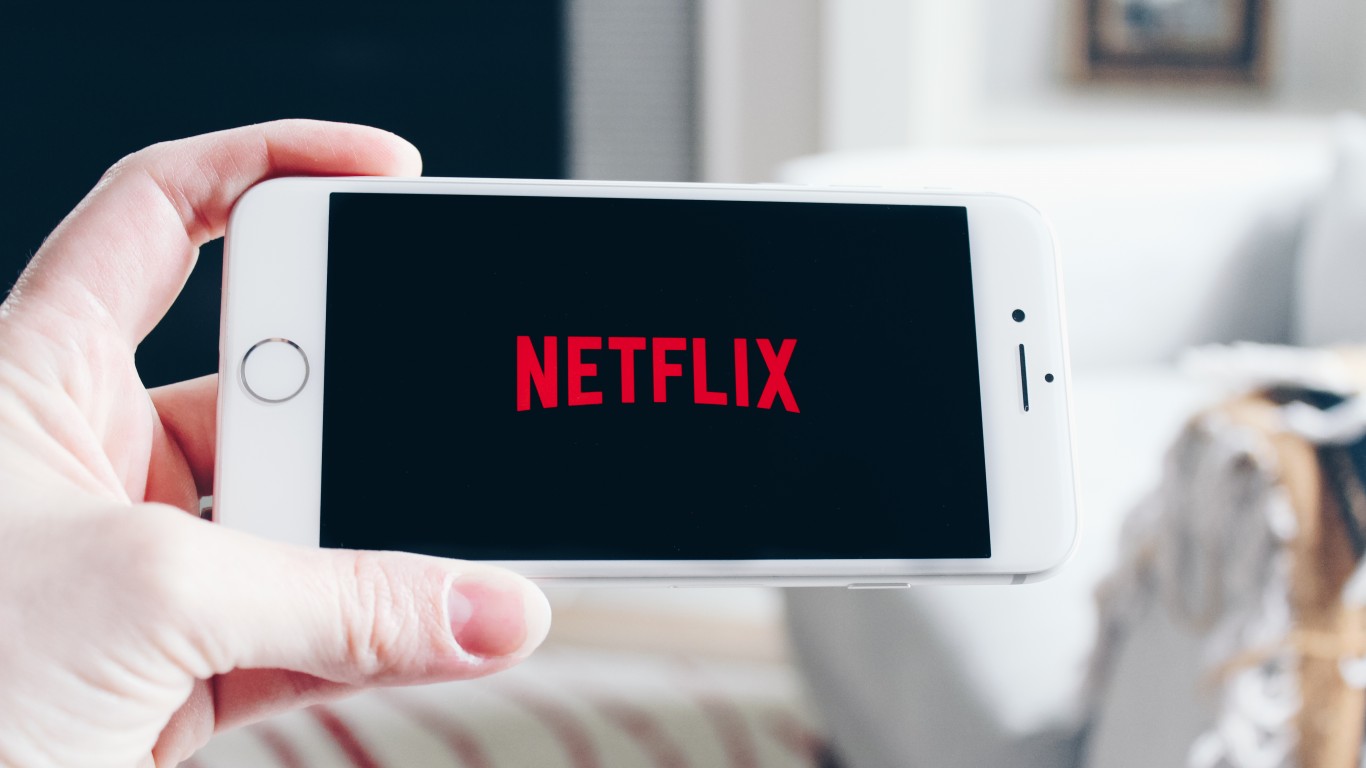Investing
Netflix (NFLX) Stock Price Prediction in 2030: Bull, Base and Bear Forecasts

Published:

In a landscape where the battle for eyeballs intensifies, Netflix Inc. (NASDAQ: NFLX) stands out as a colossus in the streaming world. As we project into 2030, understanding NFLX’s potential trajectory involves dissecting its products, earnings growth, and business valuation. With the backdrop of its recent performance—where it showcased a commendable surge in revenues and net income—the anticipation around its future performance is palpable. Let’s dive into the analysis.

Under the bull scenario, Netflix’s trajectory is marked by several key drivers:
Product Innovation and Market Expansion: Netflix’s relentless pursuit of content diversification and technological enhancements positions it as a pioneer in personalized entertainment. Its aggressive expansion into international markets, coupled with localized content strategies, is expected to fuel subscriber growth beyond current forecasts.
Earnings Growth: The company’s earnings have shown an extraordinary increase, with net income soaring by over 1500% in the latest quarter compared to the previous year. Such momentum, propelled by robust revenue growth (12.49% last quarter) and strategic cost management, indicates a bright earnings trajectory.
Business Valuation and Market Leadership: Despite trading at a premium valuation with a P/E ratio of 49.41 significantly above the subsector average of 41.77, Netflix’s market capitalization of $256.8 billion reflects investor confidence in its enduring growth story. The company’s return on equity (ROE) outperforms the subsector and S&P 500 averages, underscoring its efficient capital utilization and solid profitability.
Assuming a 25% annual growth rate in EPS from 2024 to 2030, the future EPS in 2030 would be significantly higher than the $17.23 EPS in 2024 due to this aggressive growth rate. With the future P/E ratio assumed to expand to 60, reflecting high investor confidence, the stock price projection for Netflix under the bull case scenario is approximately $3,943.63. This optimistic outlook is based on Netflix’s ability to continue its impressive growth trajectory through product innovation, market expansion, and sustained earnings growth.

In the rapidly evolving landscape of streaming media, Netflix Inc. stands at a pivotal juncture. The base case scenario for NFLX by 2030 is grounded in a balanced view of its potential, considering its product innovation, earnings growth, and business valuation as depicted in the latest financial analysis.
Product Innovation and Market Penetration: Netflix’s continued investment in content diversification and technological innovation is expected to keep its product offerings compelling. The company’s strategy to enhance user experience through AI and machine learning for personalized content recommendations plays a crucial role. However, in the base case scenario, Netflix faces stiffer competition from emerging and established players, leading to slower but steady subscriber growth.
Earnings Growth: Based on the analyst report, Netflix’s earnings have shown robust growth, with a notable increase in net income and sales in recent quarters. For instance, net income surged by 1596.4% in Q4 FY23 compared to Q4 FY22, highlighting the company’s ability to scale efficiently. Nevertheless, the base case assumes this growth moderates as market saturation approaches and content production costs escalate. The forecasted earnings per share (EPS) increase to $17.23 in 2024 from $12.01 in the previous fiscal year reflects optimism but also acknowledges the challenges of maintaining such high growth rates.
Business Valuation: Netflix’s market capitalization of $256.8 billion, alongside its P/E ratio of 49.41, places it at a premium compared to the industry average of 41.77. This premium valuation reflects the market’s confidence in Netflix’s growth trajectory and its leadership position in the streaming sector. However, the base case scenario also considers the potential impact of regulatory challenges, changing consumer preferences, and competition on its valuation. While Netflix is expected to maintain a leadership position, the valuation may adjust to reflect more realistic growth expectations and market dynamics.
Assuming a 0% annual growth rate in EPS from 2024 to 2030, the future EPS in 2030 would remain at $17.23, identical to the 2024 EPS. Given a future P/E ratio adjustment to 50, which reflects a more cautious but still optimistic investor sentiment, the stock price projection for Netflix under the base case scenario is approximately $861.50. This scenario suggests a stable performance by Netflix, maintaining its current level of profitability without significant growth or decline in its earnings per share.

As we delve into the bear case scenario for Netflix Inc. by the end of this decade, we confront a landscape marked by heightened competition, evolving consumer preferences, and significant financial challenges that could temper its ascension. This perspective, strictly derived from an in-depth financial analysis, presents a sobering view of potential hurdles Netflix may face, impacting its products, earnings growth, and business valuation.
Product Saturation and Market Penetration: In the bear case, Netflix encounters a saturated market where its once revolutionary streaming service struggles to find new growth avenues. With every major player in the entertainment industry launching or enhancing their streaming services, Netflix’s initial competitive edge in content diversity and technological innovation faces dilution. The company faces fierce competition from big brands like Prime from Amazon.com, Inc. (NASDAQ: AMZN) and The Walt Disney Company (NYSE: DIS). There are many private companies such as Hulu and Dwayne ‘The Rock’ Johnson’s Seven Bucks Productions delivering high quality content to viewers thus taking market share away from Netflix. Even traditional movie theater companies like AMC are not collapsing. The relentless pursuit of original content, once a boon, becomes a financial strain without commensurate subscriber growth, especially in mature markets.
Stalled Earnings Growth: The financial underpinnings of this scenario reveal a company grappling with the economic realities of its business model. Despite previous years of explosive growth—such as the 1596.4% net income surge in Q4 FY23 compared to Q4 FY22—this trajectory proves unsustainable. Increased content costs, coupled with the need to lower subscription prices to retain viewers in a crowded market, significantly compress margins. The projected earnings per share (EPS) growth, while optimistic in past assessments, flattens as Netflix struggles to maintain its profitability amidst rising expenses and competitive pressures.
Business Valuation Concerns: In a bear market scenario, the premium valuation of Netflix’s stock, evidenced by its high P/E ratio of 49.41 relative to the sector P/E ratio of 41.77 and S&P 500 P/E ratio of 27.30, comes under scrutiny. Investors begin to question the sustainability of its growth rates and the prudence of its investment in content. The market capitalization, which stood impressively at $256.8 billion, faces potential contraction as investors recalibrate their expectations for the company’s future performance. The optimism that once buoyed its stock price gives way to a more cautious appraisal of its financial health and market position.
Assuming a -25% annual growth rate in EPS from 2024 to 2030, the future EPS in 2030 would decrease significantly due to the compounded negative growth rate, resulting in a future EPS of approximately $3.07. With the future P/E ratio assumed to contract to 35, reflecting investor concerns and a more pessimistic view of Netflix’s future performance, the stock price projection for Netflix under the bear case scenario is approximately $107.33. This scenario paints a starkly negative picture of Netflix’s future, driven by challenges such as increased competition, market saturation, and financial pressures impacting its earnings. These are challenges that even diversified giants like Disney cannot escape.

In the high-stakes world of streaming entertainment, Netflix Inc. confronts a future brimming with both unparalleled opportunity and formidable challenges. The bull case envisions a landscape where Netflix’s innovative prowess and strategic market expansions solidify its dominion, driving its stock to new heights. Conversely, the base case posits a scenario of steady growth, tempered by intensifying competition and market saturation. The bear perspective, however, sketches a cautionary tale of potential stagnation, where escalating costs and a crowded marketplace erode Netflix’s financial robustness and market valuation. As we stand at this crossroads, the trajectory of Netflix by 2030 will be emblematic of its agility to navigate the evolving digital frontier, underscoring the critical interplay between innovation, market strategy, and financial acumen in securing its legacy in the streaming era. Before committing to an investment in Netflix stock, every investor is advised to undertake their own research and analysis to evaluate the stock’s potential thoroughly.
Let’s face it: If your money is just sitting in a checking account, you’re losing value every single day. With most checking accounts offering little to no interest, the cash you worked so hard to save is gradually being eroded by inflation.
However, by moving that money into a high-yield savings account, you can put your cash to work, growing steadily with little to no effort on your part. In just a few clicks, you can set up a high-yield savings account and start earning interest immediately.
There are plenty of reputable banks and online platforms that offer competitive rates, and many of them come with zero fees and no minimum balance requirements. Click here to see if you’re earning the best possible rate on your money!
Thank you for reading! Have some feedback for us?
Contact the 24/7 Wall St. editorial team.